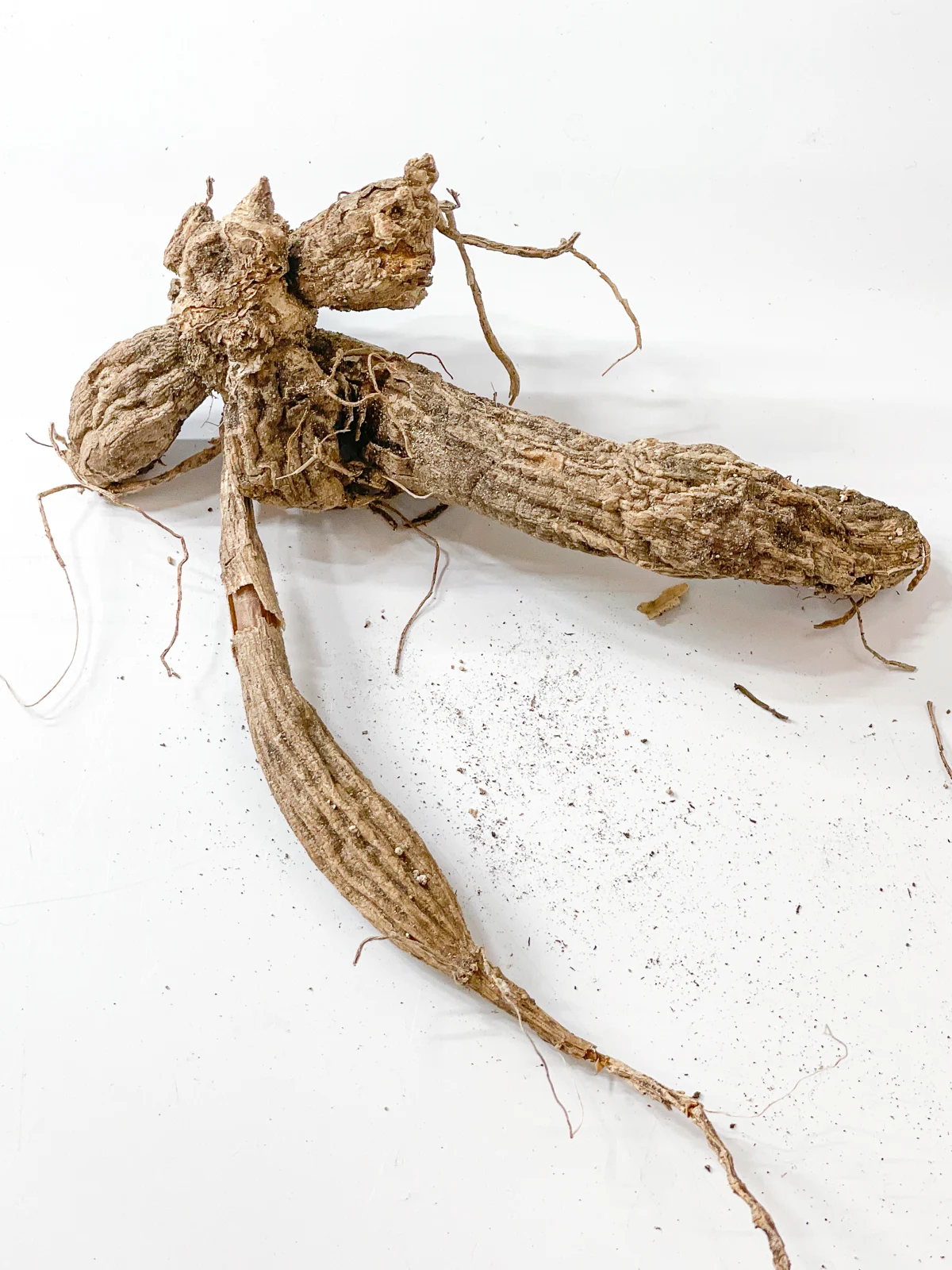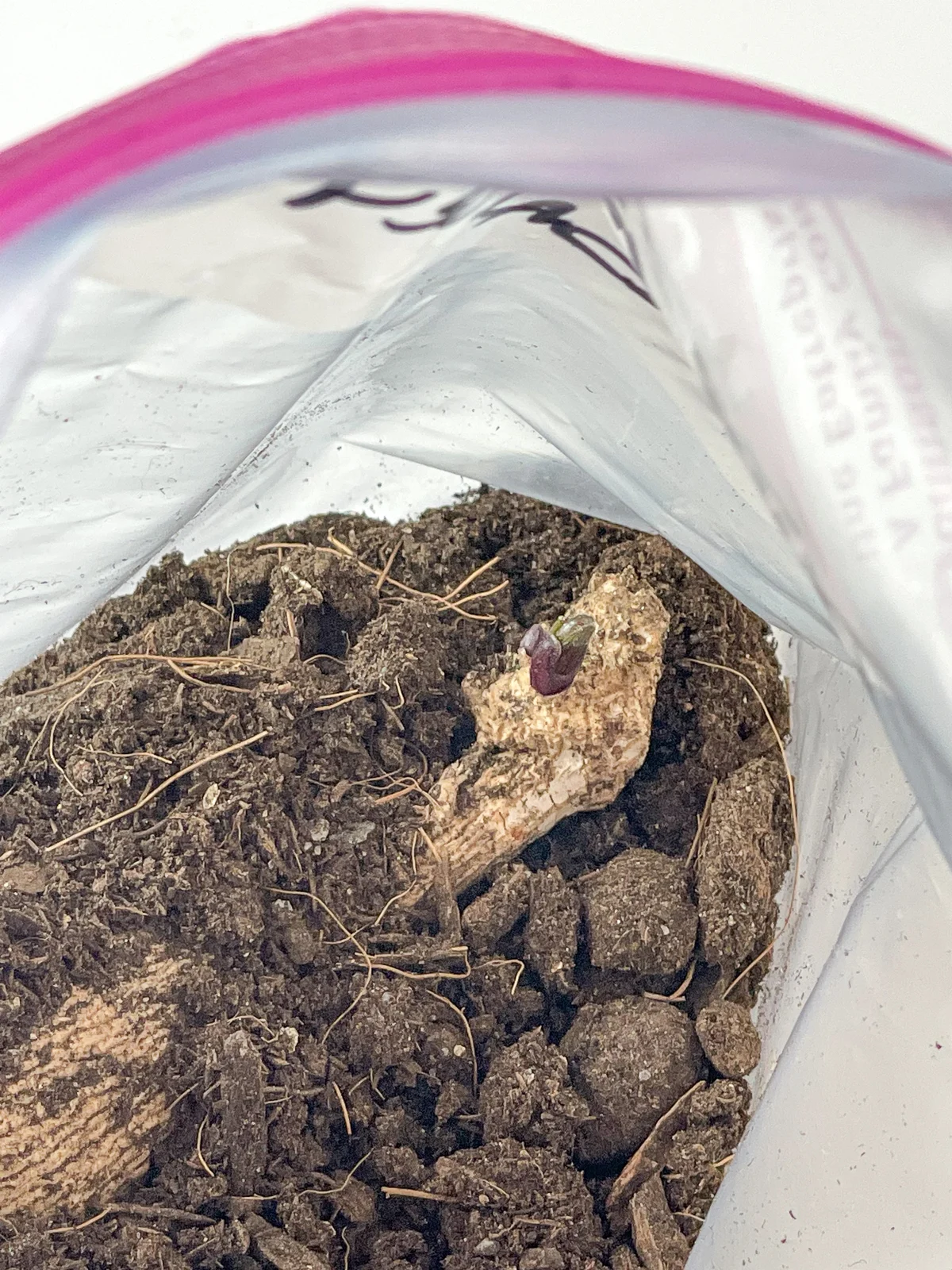Learn how to tell if dahlia tubers are dead, including storage tips, signs of unhealthy tubers and how to pre-sprout questionable tubers.

Dahlias are stunning plants that add a burst of color to your garden in late summer. However, if you live in a growing zone below zone 8, you'll need to dig up and store your dahlia tubers over the winter to protect them from the cold.
Unfortunately, if not stored correctly, dahlia tubers can mold, rot, or dry out, leaving you with dead plants come spring. If your dahlia tubers are mushy, they're most likely dead. If they're shriveled up, there's a chance they're still alive.
In this article, I'll guide you through the process of identifying dead dahlia tubers, how to easily check if there's some life left, and share some tips on proper storage and care. Let's get growing!
This post contains affiliate links for your convenience. Purchases made through these links may earn me a small commission at no additional cost to you.
Storing Dahlia Tubers
The best time to dig up your dahlia tubers is after the first hard frost, when the flowers and foliage turn brown. Here's how to prepare your dahlia tubers for storage:
Cut back the stems and dig up the tubers
Use a pair of clean pruning shears to trim the stems back a few inches above the ground.

Carefully dig around the plant, being cautious not to damage the tubers. Use a garden fork or a spade to gently lift the tubers from the ground.

Label the tubers
If you have multiple dahlia varieties, label each tuber clump as you dig it up to easily identify them in the spring. I tie flagging tape around each stem with the name of the variety and the bloom color written on the end.

Clean the tubers and let them dry
Gently shake off the excess soil and use a soft brush to remove any remaining dirt if necessary. You don't have get every speck of dirt off, but you don't want large clumps that hold moisture. Avoid using water, as it can cause the tubers to rot during storage.

Place the tubers in a well-ventilated area and let them dry for a few days to prevent mold growth. I usually leave mine in a shady spot on our deck where they can get air circulation on all sides without shriveling up in the sun.
Store the tubers
Place the tubers in a box or container filled with slightly moistened peat moss, vermiculite, or perlite. Ensure that the tubers are not touching each other to prevent rot.
I like to use a large, clean grow bag filled with vermiculite, which I reuse year after year. The fabric allows air circulation so it doesn't develop mold, and the vermiculite prevents the tubers from drying out.
Just make sure that all the tubers are below the surface of the vermiculite. All you can see are a few stems sticking out to make them easier to pull out and check on them.

Store the container in a cool, dark place with a temperature between 40-50°F (4-10°C). Don't put them in an unheated garage if there's a chance it will get below freezing! I leave a soil thermometer in the vermiculite and check on the tubers every once in a while throughout the winter.
By following these steps, you'll give your dahlia tubers the best chance of surviving the winter and thriving in your garden come spring.
Signs of Dead Dahlia Tubers
After storing your dahlia tubers over the winter, it's essential to check their condition before planting them in the spring. Here are some signs to help you determine if your dahlia tubers are dead:
Squishiness
Healthy tubers should be firm to the touch. If the tuber feels soft or squishy, it's likely rotting and should be discarded. If they're stinky, they're dead!
Mold
Examine the tubers for any signs of mold or fungus. Mold typically appears as a fuzzy or powdery white, green, or black growth on the surface of the tuber.
If mold covers the entire tuber, it's probably dead and should be thrown away. If there's only a small amount of mold, you may be able to save the tuber by cutting away the affected area and treating it with a fungicide or sprinkle with cinnamon (a natural fungicide).
Shriveling
If the tuber appears shriveled or dried out, it may be dead. A healthy tuber should be plump and have a smooth surface. However, a dried out tuber may still have some life left in it, so you can try pre-sprouting it with the process outlined below.

Pre-sprouting Questionable Dahlia Tubers
If you're unsure whether a tuber is alive or dead, you can try pre-sprouting it first. This process doesn't take up much space, and will ensure that you're only planting healthy tubers that will bloom in your garden.
Place the questionable tuber in a quart sized plastic sandwich bag with potting soil and mist it lightly with water. Leave the bag open and place it in a warm, sunny location or under grow lights.
Check on the tuber after a week or two. If you see white roots through the clear bag or sprouts coming from the top, it's alive and ready for planting! I wasn't sure about this one, but after a week in soil, you can see a little sprout coming out!

If it's starting to mold or you don't see any roots or sprouts after a few weeks, you can safely toss the bag and the dead tuber.
I use this pre-sprouting method for all my dahlia tubers after dividing to make sure there's a viable eye on each one. It takes up much less space than potting them all up individually, and it's easy to see the roots developing through the bag.
You can even leave them in their bags for a few extra weeks if your weather isn't warm enough to plant outside yet. Just make sure not to overwater them and accidentally cause the tubers to rot.

When it's time to plant outside, rip the bag down the side rather than trying to pull it up through the top. You don't want to accidentally pull off the sprout or ruin those roots!
Once they've put on at least three sets of leaves, it's time to pinch your dahlias! This will give you even more flowers from a single tuber, and create a sturdier plant.
Still waiting for your dahlia to bloom? Check out this article on 7 reasons why your dahlias aren't blooming to make sure you did everything right!
I hope this article has helped answer your questions about how to tell if your dahlia tubers are dead or not! In general, dahlias are pretty resilient plants, so you may be surprised even if your tubers look pretty sad. Just stick them in a bag of soil and see how it does!







Peggy
Thursday 11th of April 2024
I love your info and advice